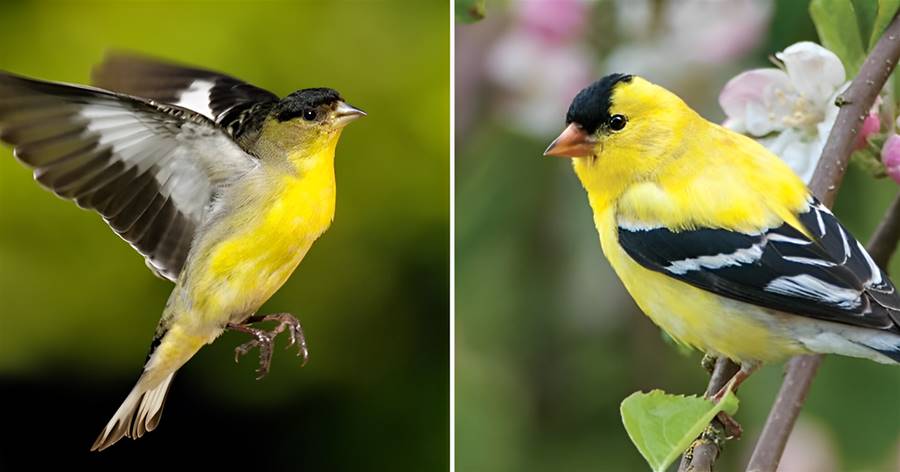

Goldfinches are a favorite at backyard bird feeders, but these finicky finches can be a little tricky to attract to the yard consistently. That’s why we’ve put together a list of helpful tips on how to attract goldfinches to your yard and feeders.
There are three species of goldfinch in the United States (American, Lesser, and Lawrence’s). are the most widespread. They can be found year-round in the northern half of the country, and during the non-breeding months all over the southern half of the country. But you may have noticed that you don’t see them frequently, or they show up for few days only to disappear again.
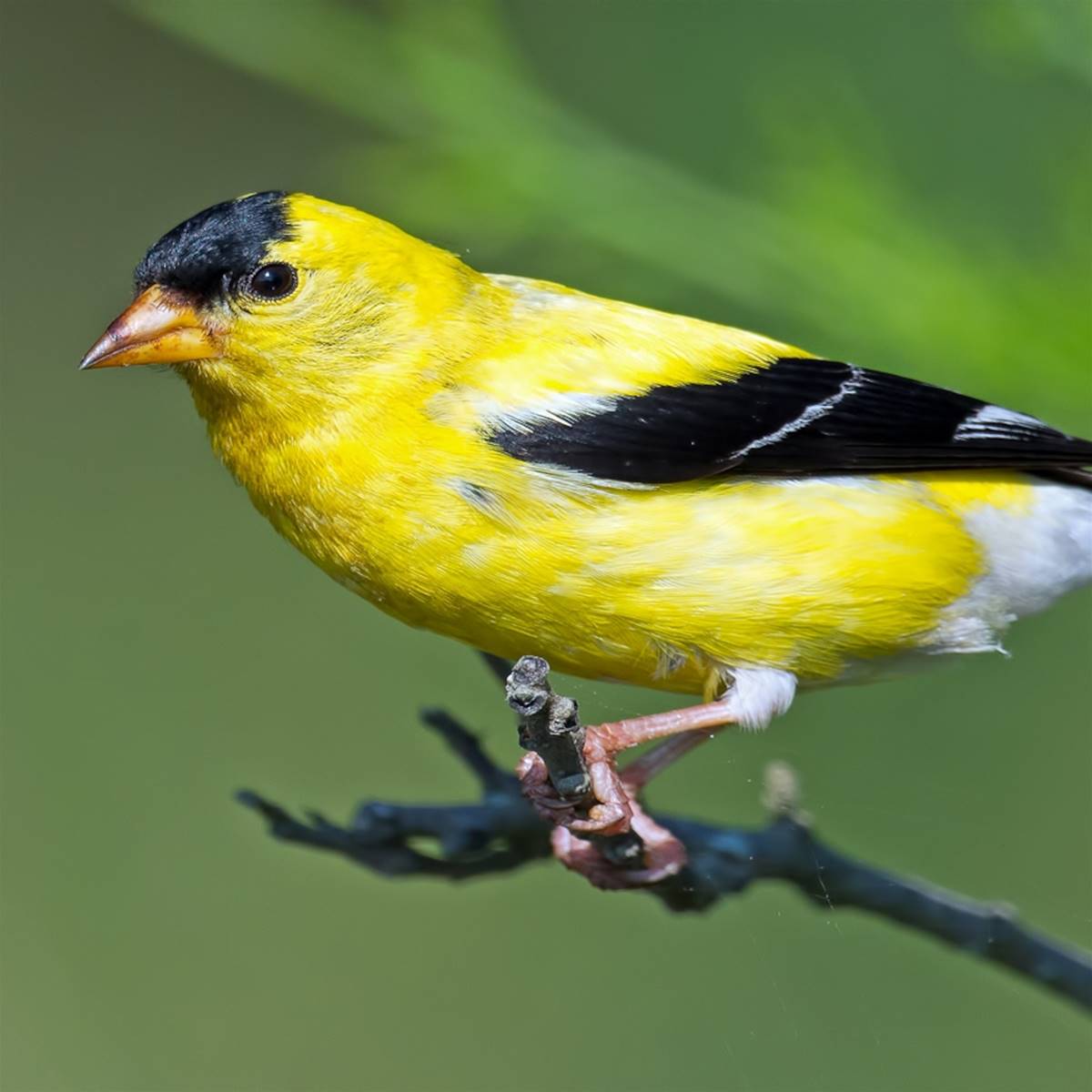
Goldfinches favorite seed to eat from a backyard feeder is nyjer (pronounced NYE-jer). You may also see it sold under the names Niger, nyger, or thistle (even though it isn’t actually thistle seed, confusing I know). When searching for how to attract goldfinches to your yard, this probably the number one tip that you’ll find.
Nyjer are small, black, oily seeds that contain proteins, oil and sugars. They are mainly grown in Africa, India and southeast Asia.
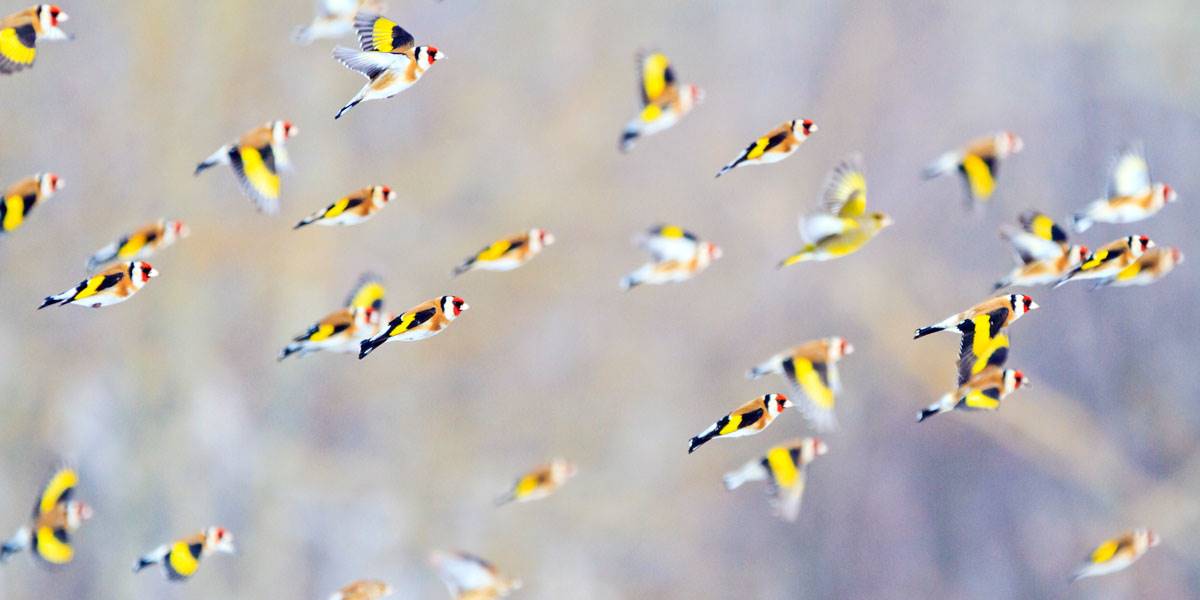
Nyjer is such a tiny seed, that it doesn’t do well in most types of bird feeders. It will easily slide right out of the feeding ports. It can be scattered on an open tray or . But the most popular way to feed nyjer is in a long, slender tube style feeder.
Either made of wire mesh or plastic walls that have multiple perches and small openings. The openings have to be small enough to hold the seed in. A great goldfinch feeder that will feed many hungry birdies is the .
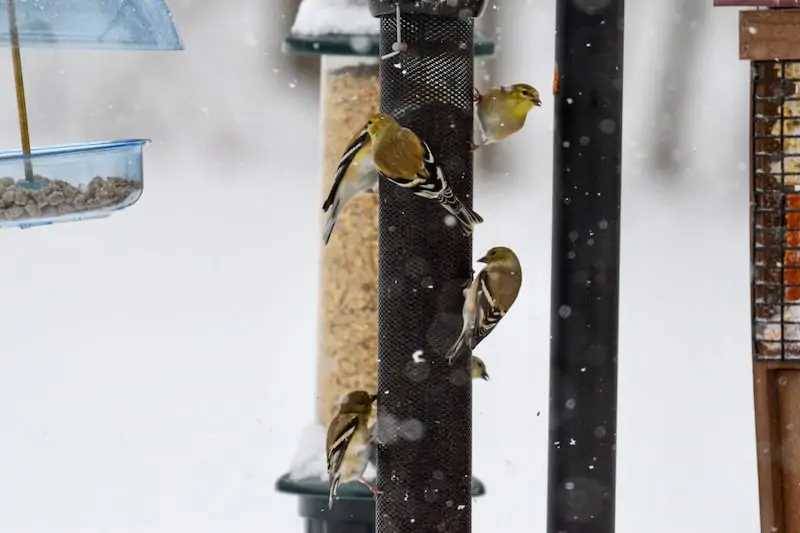
Another oily black seed that goldfinches enjoy are . These seeds have a nutritious, high fat content birds love. The seeds are smaller and easier to crack open than some other types of sunflower seeds, making them perfect for finch’s smaller beaks.
Most backyard birds are a fan of black oil sunflower, so if you wanted to stick with one type of seed that would please the widest variety, this would probably be it.
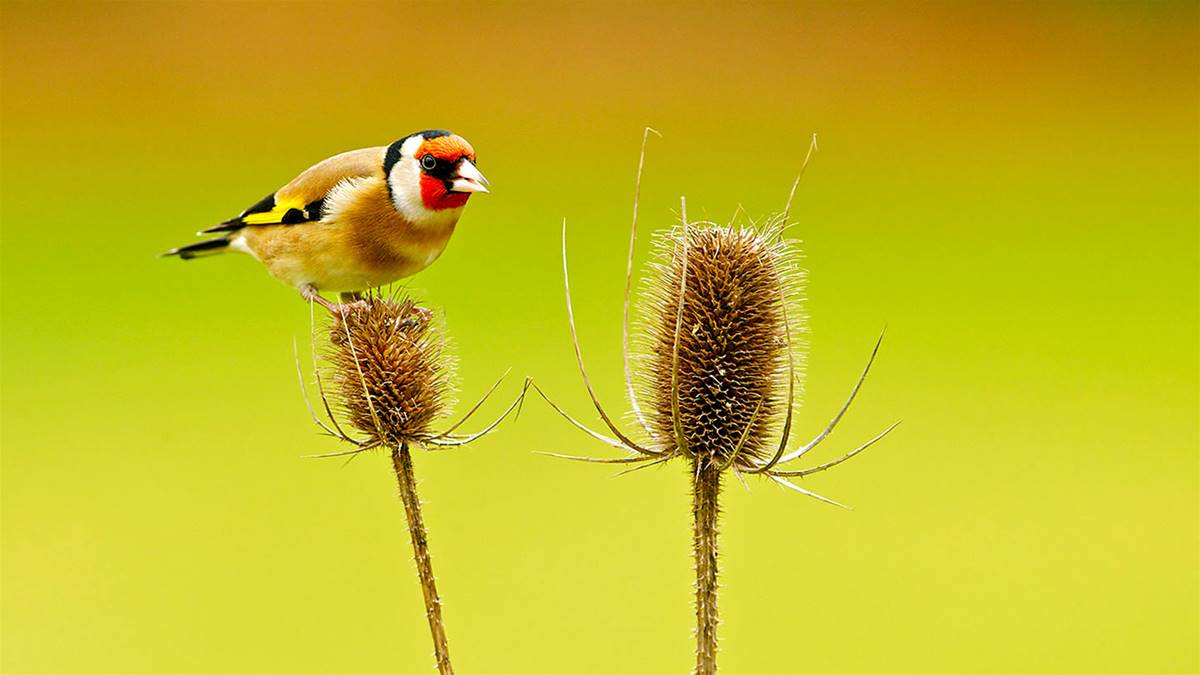
Black oil sunflower works well with most types of bird feeders, but I would recommend a tube feeder for feeding goldfinches. Something with multiple, staggered perches like this
For more on recommended goldfinch feeders for our top finch feeder picks.
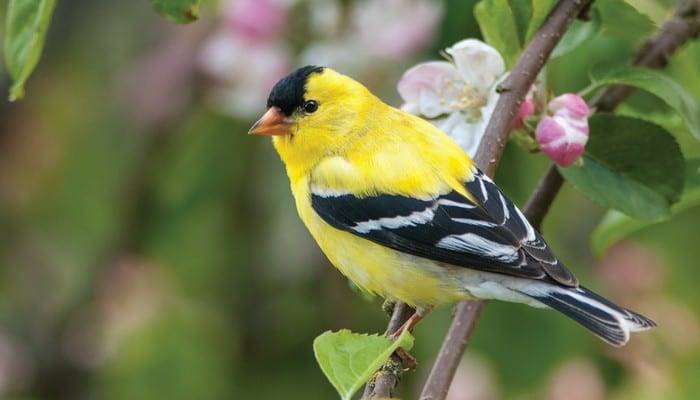
Not many birds would like a dirty feeder or moldy, wet seeds. But finches can be particularly picky. They won’t visit a feeder they find to be too dirty or if they feel the seed has gone stale or bad.
Nyjer feeders, especially the ones made of wire mesh, unfortunately get wet easily in rain or snow. Wet nyjer seed gets clumpy, and potentially moldy. Too many cycles of wet and dry and it can become hard like cement at the bottom of the feeder.
If you know a big weather event is coming, it might be best to take your mesh nyjer feeder indoors until the storm passes. If you do leave your feeder outside, check the seed the day after the storm. Is it clumpy and soggy? If so dump it out, give the feeder a good rinse and let it dry, then refill with fresh seed.
You can also hang a weather guard over the top of your bird feeder, such as this large .
Tip 3 says they don’t like dirty, soggy, clumpy seed. That may seem obvious. But what may be less obvious is that goldfinches can be quite picky about how their seed is. Any seed really, but especially nyjer.
When nyjer is fresh, it is a dark black color and nice and oily. But nyjer seed can dry out quickly. When it dries out it turns a more dusty brown color, and looses most of its nutritious oils.
Without the rich oils, the seeds loose their value as a quality energy source, and the birds can taste the difference.
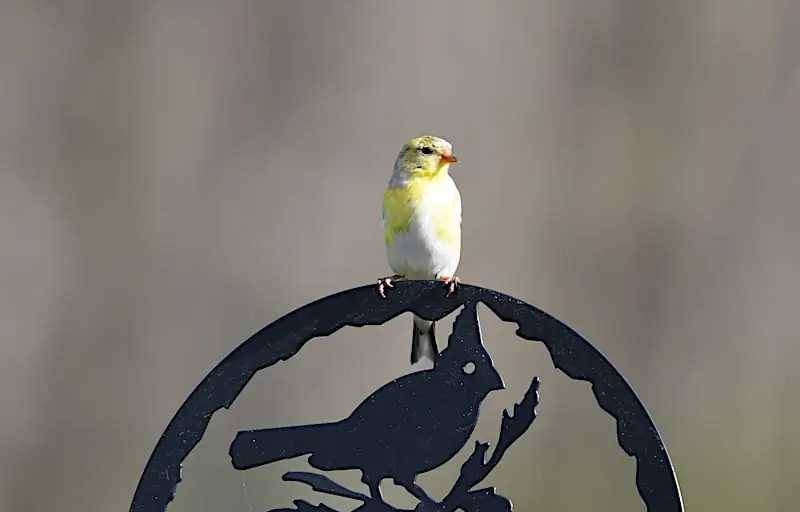
Laura Erickson, a well known author and blogger in the birding world, . You can tell the difference between a nice, rich fresh bean and a flavorless, dried out bean.
This can make nyjer a little trickier to feed, and you have to pay more attention to the quality of seed you are buying and how long you let it sit out.
Buy a bag where you can see the seed inside. Look for too many brown or dried out / dusty looking seeds.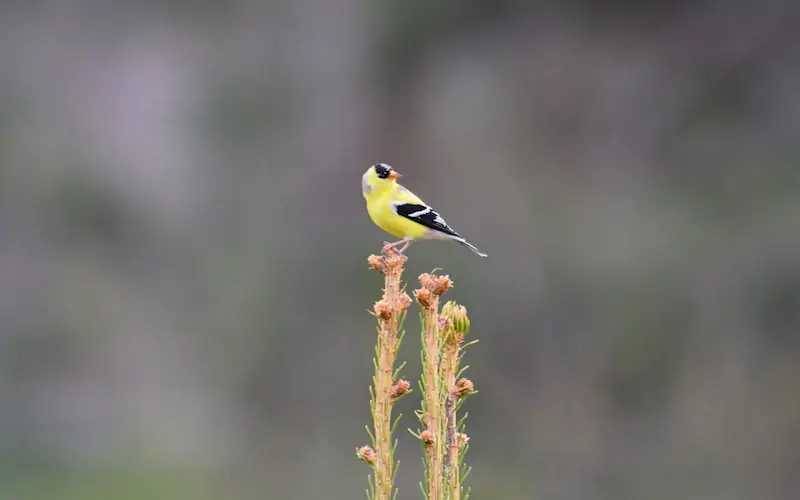
Goldfinches can be a little wary of backyard feeders. In order to make them safer, place your feeder where there is cover close by. Within 10-20 ft of trees, bushes and shrubs. This way, they know if a predator comes around they can quickly dart to a safer location. This will often make them more willing to come investigate your feeder.
Last up on this list of tips for how to attract goldfinches, entice them to your yard with a variety of seed bearing plants.
They like seeds from flowers, but also shrubs, and grasses. Some good choices for your garden are sunflowers, black-eyed susans, coneflowers, asters and thistles. They love thistles! But, make sure it is a native thistle as many types are unfortunately invasive. Some trees to consider that Goldfinches are known to like are alder, birch, western red cedar and elm.
Goldfinches use soft plant fluff for their nests, and like to collect this from plants such as milkweed, cattails, dandelions, cottonwood and thistle. Goldfinches nest later in the season than most birds, and it is thought this is because they wait for plants such as thistle to go to seed and produce the plant-down they use in their nests.
One plant to AVOID is burdock. Goldfinches will be attracted to its seeds, but can become tangled and snared in the burrs and unable to free themselves.
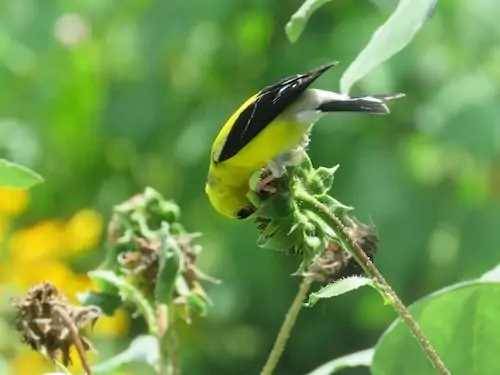
When it comes to how to attract goldfinches, the more of these tips you can employ at once, the better chance of attracting goldfinches to your yard. One great way to boost your chances is to combine the nyjer (or sunflower) feeder with brightly colored flowers.
Plant some yellow flowers surrounding or in close proximity to your finch feeder, and don’t forget to include those black eyed susans and coneflowers! These tips to create an attractive habitat for goldfinches could really establish your yard as a routine spot to come and feed.
